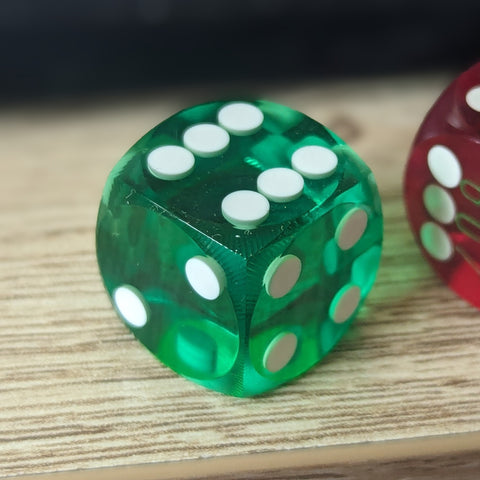A quest for precision at every detail
Us backgammon players take it to the next level in search of perfection. It's just plain fun, and part of the game.
It goes for our mind skills, but certainly for our equipment too. One of the most important pieces of the backgammon set are precision dice.
Normal drilled pips make the dice unreliable and not random.
Most precision dice are much better than any drilled dice. But we can take it a step further and explore how a precision die should be made.
Avoid these errors of precision dice
- Do not use engraved dice, such as the very popular serialized dice. It's like driving a car on a flat tire. The precision has been compromized as material is removed to carve the font. Filling it with ink does not fix the issue.
- Don't use resin precision dice. They may appear normal, but the heat treatment involved in using resin will deform the shape.
- Smooth corners on the die is a clue that a human has polished the die, which inevitably will compromise the precision. Leave the level of precision to computer guided precision tooling.

This green die shows clear computer guided precision cutting, without additional polishing - just as it should be.

This red die shows a smooth corner, which means polishing has altered the precision of the die. You may also notice a serial number that negatively impacts the precision.
Do you want real precision dice?
We sell our own line of precision dice right here in the Backgammon Galaxy shop. Each one is made using our knowledge and insight, and carefully inspected before selling.


Share:
Nordic Open 2024 dates, offers, and youtube links
BGWC 2024 Resource page (Stream, Brackets, Products, News)